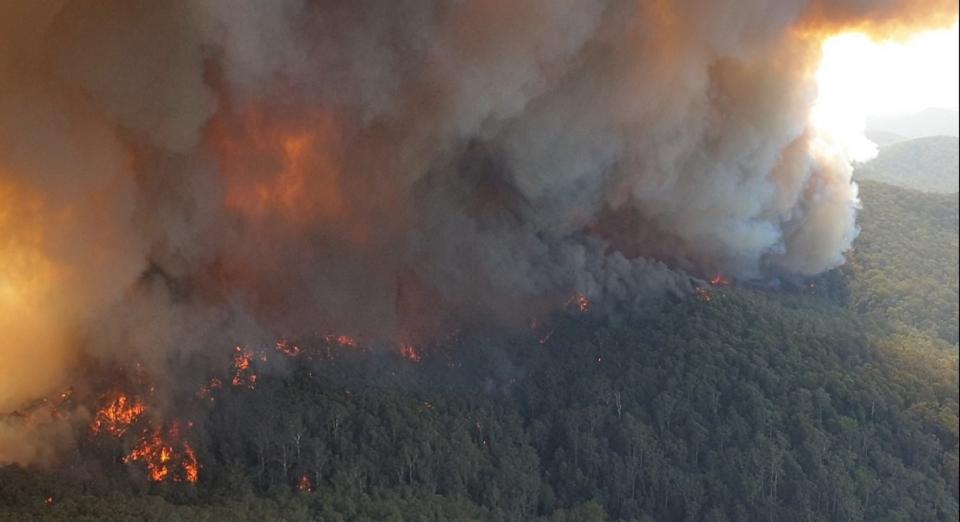
PUBLICATIONS
Published works

Fire coalescence and mass spot fire dynamics - final project report
| Title | Fire coalescence and mass spot fire dynamics - final project report |
| Publication Type | Report |
| Year of Publication | 2023 |
| Authors | Sharples, JJ, Hilton, J, Sullivan, A, Badlan, R |
| Document Number | 736 |
| Date Published | 04/2023 |
| Institution | Natural Hazards Research Australia |
| Report Number | 736 |
| Abstract | The Fire coalescence and mass spot fire dynamics project (the Spotfire Project) was one of the core research projects within the Bushfire and Natural Hazards CRC’s Bushfire Predictive Services research cluster. Specifically, the Spotfire Project was focused on enhancing our understanding of the physical processes involved in spot fire development and coalescence and developing computationally efficient mathematical models that can accurately account for these the patterns of bushfire propagation associated with mass spotting and other modes of dynamic fire behaviour. Current operational models and associated simulation platforms are predicated on the assumptions that fires spread in a quasi-steady manner and that different parts of a fire line evolve independently of other parts – both of these assumptions are manifestly untrue during mass spotting events. The research took a multifaceted approach, which drew upon experimentation, computer simulation and mathematical modelling to develop a new dynamic modelling framework that permits faster-than-real-time simulation of fire propagation incorporating dynamic drivers. Experimentation took place at both laboratory and field scales. Laboratory experimentation was conducted in the CSIRO Pyrotron and in collaboration with Portuguese colleagues at the Centre for the Study of Forest Fires. Field scale experiments were also conducted in Portugal. The experiments provided insights into the dynamic nature of fire behaviour and provided data for calibration and validation of the models under development. Coupled fire-atmosphere models were used to perform idealized simulations of various scenarios involving dynamic fire propagation. The model output provided detailed quantitative insights into the physical processes driving dynamic fire propagation and were used to inform development of new mathematical models. The mathematical model developed during the project is essentially a two-dimensional version of a coupled fire-atmosphere model – it incorporates the feedback between the fire and the atmosphere but within the two-dimensional Spark fire simulation platform. The research has yielded many important and significant insights into the behaviour of coalescing spot fires, and these insights have enhanced our understanding of the processes driving fire propagation and the way we model dynamic fire behaviours. These have in turn provided new understanding of violent pyroconvective events and extreme bushfire development. The most significant research outcome was the development of the pyrogenic potential model, which permits world’s first capability to model dynamic modes of fire propagation (e.g., vorticity-driven lateral spread) using a two-dimensional simulation framework. This means that explicitly modelling such effects in operational timeframes is now a feasible option. The research has also examined various other issues related to the spotting process and dynamic fire propagation more generally. These include: the effects of wind-terrain interaction on ember trajectories and the likely distribution of spot fires downwind of complex terrain, the influence of spot fires on the overall rate of spread of a fire, the influence of terminal velocity assumptions on ember trajectory modelling, the influence of fuel characteristics (e.g., bulk density) on spot fire development and pyroconvective feedback, the role of fine scale vorticity effects on dynamic fire behaviour, and development of simple measures of pyroconvective potential. There is considerable utilisation potential for the research findings. The advances in fire behaviour modelling are easily incorporated within the Spark simulator platform. Given that Spark has been formally chosen by AFAC to be the new national bushfire prediction platform, the project’s research findings will eventually be available to all involved in operational prediction of bushfire propagation. Moreover, the insights into dynamic fire behaviours provided by the project will form the basis for new firefighter training and education materials that will equip operational personnel with better knowledge of the full spectrum of possible fire behaviours in given scenarios. This will improve situational awareness, with benefits for firefighter safety. The project has also developed a new mapping product that identifies regions prone to mass spotting in association with vorticity-driven lateral spread. This will be available to fire management agencies and other relevant organisations, to assist with fire behaviour prediction, with special relevance to anticipating blow-up fire events and extreme bushfire development. Overall, the Spotfire Project has presented a new paradigm for understanding fire behaviour and has made the first significant advances towards the next generation of operational models. The insights gained from the research complements and extends existing fire behaviour knowledge in a way that enhances our ability to deal with the increasing bushfire threat into the future. |
| Refereed Designation | Refereed |
Published Works


